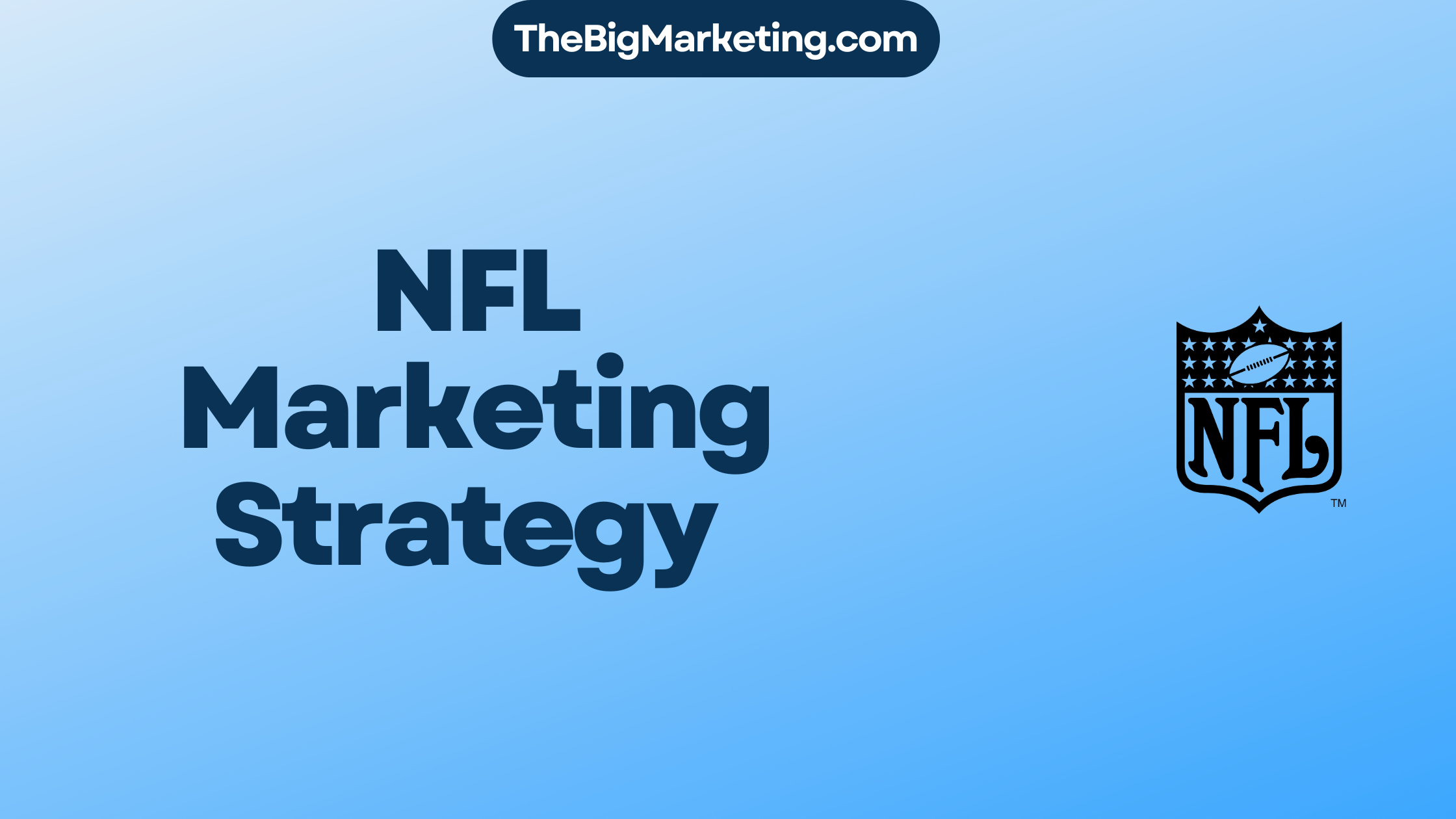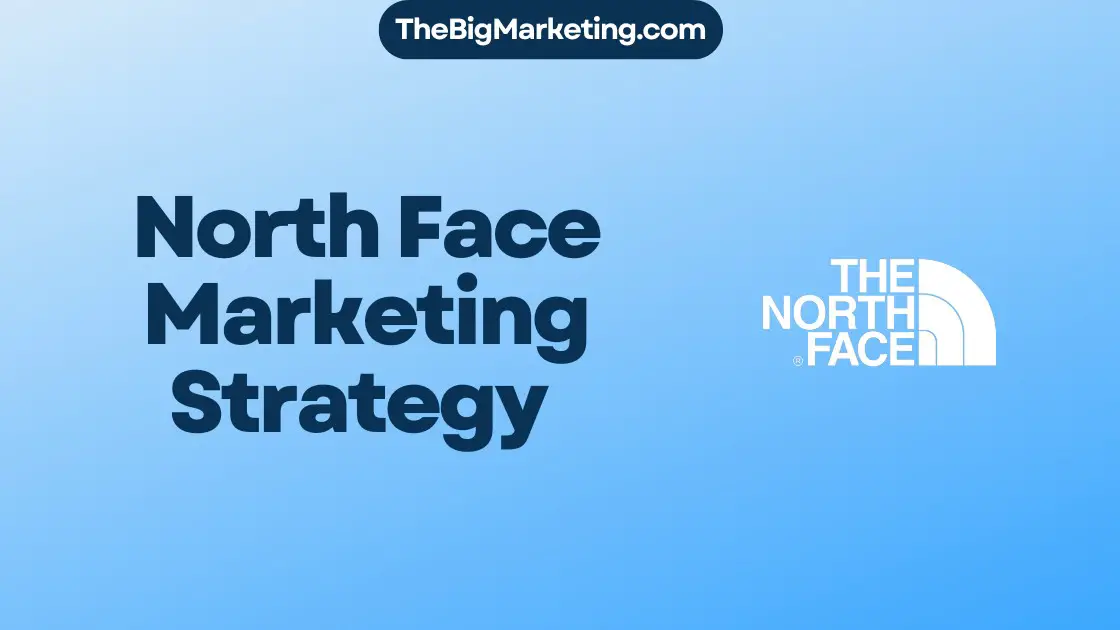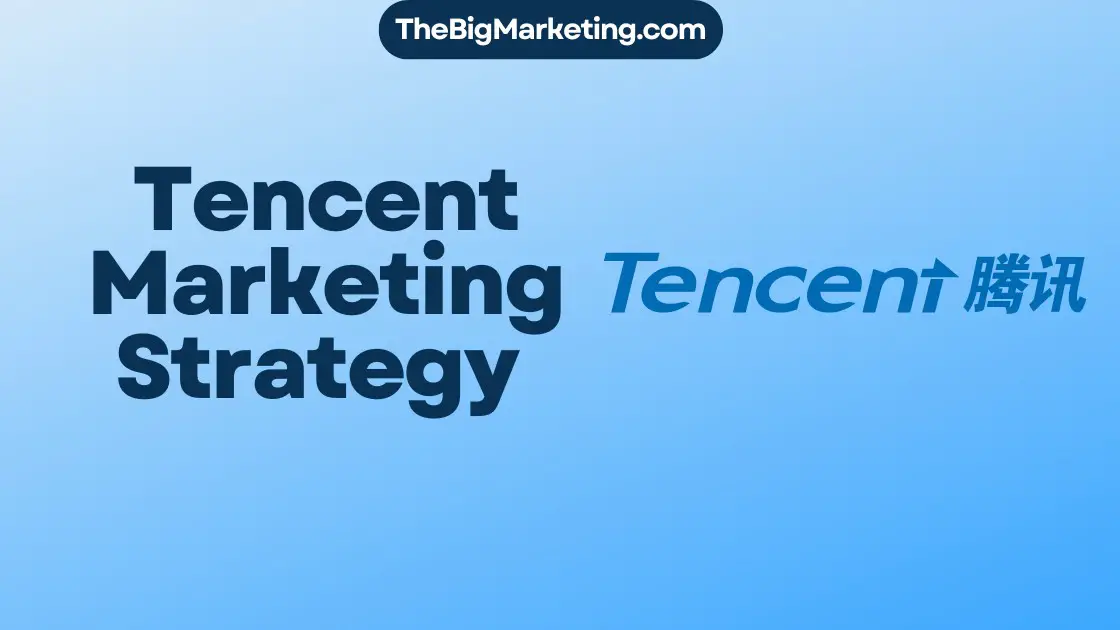Welcome to our in-depth case study on Cargill’s marketing strategy for the year 2024. In this article, we will examine the challenges faced by Cargill, the world’s largest private company, in building a global brand. We will focus on the four-year journey of Paul Hillen, the vice president of global marketing, and explore the evolution of the company’s brand, the decision to develop a new brand identity, and the options for the new brand positioning.
Key Takeaways:
- Cargill, the world’s largest private company, faces challenges in building a global brand.
- Paul Hillen, the VP of global marketing, leads the four-year journey of Cargill’s marketing strategy.
- The case study examines the evolution of Cargill’s brand and the decision to develop a new brand identity.
- Four options for the new brand positioning are evaluated, aligning with the company’s objectives and target audience.
- Implementation challenges and the importance of building a strong brand network are explored.
The Culture and Organizational Structure of Cargill
The culture and organizational structure of Cargill play a crucial role in shaping the company’s operations across various businesses and geographies. Understanding the intricacies of Cargill’s organizational framework provides valuable insights into its management approach and strategic decision-making processes.
The Organizational Structure
Cargill follows a decentralized organizational structure that allows for effective decision-making and promotes innovation at all levels. The company operates through multiple business units, each with its own set of responsibilities and objectives. This structure enables Cargill to adapt swiftly to market changes and tailor its strategies to meet the specific needs of different industries and regions.
The organizational structure is designed to foster collaboration and cross-functional interaction, ensuring that resources and expertise are effectively shared across the company. This dynamic approach allows Cargill to leverage its diverse capabilities and deliver comprehensive solutions to its customers, regardless of their location or industry.
The Culture of Collaboration
Cargill’s culture is deeply rooted in collaboration, respect, and integrity. The company values teamwork and recognizes the contributions of its employees in driving its success. This culture of collaboration encourages open communication, knowledge-sharing, and innovation, creating an environment where employees feel empowered to contribute their ideas and expertise.
Cargill’s commitment to diversity and inclusion is reflected in its organizational culture. The company believes that diverse teams lead to better business outcomes and actively promotes diversity in its workforce. By embracing different perspectives and experiences, Cargill fosters an inclusive culture that enhances creativity, problem-solving, and decision-making.
Furthermore, Cargill places a strong emphasis on ethical practices and sustainability. As a leading agricultural company, Cargill understands the importance of responsible business operations and strives to make a positive impact on the environment and the communities it serves.
Operating Across Geographies
Cargill’s global presence spans over 70 countries, allowing the company to effectively serve its customers around the world. The ability to operate across diverse geographies requires Cargill to adapt its business strategies to local market conditions, regulatory frameworks, and cultural nuances.
This expansive geographic reach also presents opportunities for knowledge transfer, as Cargill leverages the expertise gained in one region to create value in another. By leveraging its global network, Cargill can tap into emerging markets, explore new growth opportunities, and strengthen its position as a global leader in the agricultural industry.
| Key Points | Benefits |
|---|---|
| Decentralized organizational structure | Enables agility and adaptability |
| Culture of collaboration and respect | Promotes innovation and employee engagement |
| Commitment to diversity and inclusion | Fosters creativity and better decision-making |
| Global operations and market presence | Provides access to diverse markets and opportunities for growth |
| Emphasis on ethical practices and sustainability | Aligns with consumer expectations and supports long-term success |
Understanding the culture and organizational structure of Cargill is essential for comprehending the context in which the company operates. This knowledge will serve as a foundation for exploring the subsequent discussions on Cargill’s brand evolution and brand positioning strategies.
Evolution of Cargill’s Brand
The evolution of Cargill’s brand reflects the company’s ability to adapt to the changing market landscape and evolving consumer preferences. Over the years, Cargill has strategically positioned itself as a leader in the agricultural industry, constantly refining its brand image to stay relevant and competitive.
Founded in 1865, Cargill started as a grain storage warehouse in Iowa. As the company grew, it expanded its operations into various areas of the agricultural supply chain, including sourcing, processing, and distributing commodities. This diversification necessitated a brand that could encompass the entirety of Cargill’s offerings and convey its expertise across different sectors.
Throughout its history, Cargill has recognized the importance of building a strong brand identity to differentiate itself from competitors and forge meaningful connections with customers. The company’s brand evolution can be traced back to the early 20th century when it adopted the iconic Cargill logo, showcasing its commitment to quality and reliability.
As the global marketplace became increasingly interconnected, Cargill recognized the need to unify its brand identity across different regions and businesses. This led to a comprehensive rebranding effort in the late 1990s, resulting in a new logo and tagline that embodied Cargill’s values of integrity, innovation, and sustainability.
Since then, Cargill has continued to refine its brand strategy, embracing digital transformation and embracing new technologies to deliver on its brand promise. The company’s commitment to sustainability and responsible sourcing has also played a pivotal role in shaping its brand image, resonating with consumers who prioritize ethical and environmentally-friendly practices.
Today, Cargill’s brand evolution is a testament to its ability to adapt and thrive in a rapidly changing business landscape. With its rich history, global reach, and commitment to innovation, Cargill continues to position itself as a trusted partner for customers in the agriculture and food industries.
| Year | Key Milestone |
|---|---|
| 1865 | Cargill founded as a grain storage warehouse in Iowa |
| Mid-20th century | Adoption of the iconic Cargill logo |
| Late 1990s | Comprehensive rebranding effort with a new logo and tagline |
| Present day | Continuous brand refinement to align with market trends and consumer preferences |
Developing a New Brand Identity
The decision to develop a new brand identity for Cargill marks a significant milestone in the company’s journey. Under the leadership of the newly appointed VP of global marketing, Paul Hillen, Cargill recognized the need for a unified brand that would resonate with its diverse businesses and global footprint.
Creating a new brand identity involves careful consideration and an understanding of the challenges that come with aligning different businesses and geographies. Cargill’s aim was to develop a brand identity that would not only reflect its values and purpose but also unify its various entities under one cohesive umbrella.
Paul Hillen and his team embarked on extensive research, market analysis, and stakeholder engagement to drive the development of the new brand identity. Through this process, they sought to uncover insights that would inform the brand’s positioning, visual identity, and messaging.
With a strong focus on authenticity, innovation, and sustainability, Cargill aimed to create a brand identity that would resonate with its target audience and set the company apart from its competitors in the market. The new brand identity would serve as a powerful tool to communicate Cargill’s values, purpose, and commitment to its customers and stakeholders.
The development of the new brand identity posed unique challenges, including the need to balance consistency across multiple businesses while allowing for flexibility to cater to specific market needs. Paul Hillen and his team navigated these challenges by ensuring cross-functional collaboration and alignment, enabling them to create a brand identity that would effectively represent Cargill across the globe.
The process of developing a new brand identity is an ongoing journey, and Cargill remains committed to refining and adapting its brand identity as the market evolves. The next section will delve into the evaluation of different brand positioning options, shedding light on the strategic decisions made by Paul Hillen and his team.
Evaluating Brand Positioning Options
As Paul Hillen, the VP of Global Marketing at Cargill, embarked on the journey of developing a new brand positioning for the company, he carefully evaluated four options to ensure that the chosen strategy aligns with Cargill’s objectives and resonates with the target audience. Let’s take a closer look at the considerations and insights that guided Paul Hillen through the decision-making process.
Option 1: Differentiation through Sustainability
One option that Paul Hillen explored was positioning Cargill as a leader in sustainable practices within the agricultural industry. This strategic approach involved highlighting the company’s commitment to eco-friendly processes, responsible sourcing, and reducing its environmental footprint. By leveraging sustainability as a key differentiator, Cargill aimed to attract environmentally conscious consumers and gain a competitive edge.
Option 2: Quality and Trust as the Foundation
Another option under evaluation was emphasizing Cargill’s unwavering commitment to delivering high-quality products and building trust among its stakeholders. This brand positioning strategy revolved around showcasing the company’s rigorous quality control processes, industry expertise, and track record of consistently meeting customer expectations. By positioning itself as a trusted partner, Cargill aimed to strengthen customer loyalty and attract new business opportunities.
Option 3: Innovation and Technological Advancement
Recognizing the importance of innovation in the modern agricultural landscape, Paul Hillen considered positioning Cargill as an industry leader in technology and innovation. This approach involved showcasing the company’s cutting-edge research, advanced production techniques, and use of data analytics to drive efficiency and sustainability. By positioning itself as an innovative force, Cargill aimed to attract tech-savvy customers and position itself at the forefront of industry advancements.
Option 4: Customer-Centric Solutions
The fourth option that Paul Hillen evaluated focused on positioning Cargill as a customer-centric organization, dedicated to understanding and meeting the unique needs of its diverse customer base. This approach involved implementing tailored solutions, personalized service, and fostering strong customer relationships. By prioritizing the customer experience, Cargill aimed to differentiate itself as a company that truly cares about its customers’ success.
After careful analysis and consideration, Paul Hillen and the Cargill team decided to pursue a brand positioning strategy that combines elements of differentiation through sustainability and customer-centric solutions. By leveraging its commitment to sustainability and tailoring solutions to meet customer needs, Cargill aims to carve out a unique position in the market and drive long-term growth.
| Brand Positioning Options | Description |
|---|---|
| Differentiation through Sustainability | Positioning Cargill as a leader in sustainable practices within the agricultural industry by highlighting eco-friendly processes and responsible sourcing. |
| Quality and Trust as the Foundation | Emphasizing Cargill’s commitment to delivering high-quality products and building trust among stakeholders through rigorous quality control and industry expertise. |
| Innovation and Technological Advancement | Positioning Cargill as an industry leader in technology and innovation by showcasing advanced production techniques and data analytics capabilities. |
| Customer-Centric Solutions | Focusing on tailoring solutions to meet customer needs and fostering strong customer relationships. |
Implementing the New Brand Strategy
After developing a comprehensive new brand strategy for Cargill, the next crucial step was its implementation. Paul Hillen, the vice president of global marketing, faced various challenges, but with careful planning and strategic execution, he navigated the process successfully.
To bring the new brand strategy to life, key building blocks were established, including the brand promise, brand expression, and brand architecture. The brand promise embodied Cargill’s commitment to delivering high-quality products and services that meet customer needs. It conveyed the company’s dedication to sustainability, innovation, and partnership with its customers.
The brand expression encompassed the visual and verbal elements that communicated the brand’s essence and personality. This involved crafting a compelling brand story, designing a visually appealing logo, and defining the tone of voice for all brand communications. Every touchpoint was carefully considered to ensure consistency and alignment with the new brand strategy.
Additionally, the brand architecture determined how the brand would be organized and structured across Cargill’s diverse businesses and geographies. Hillen and his team conducted an in-depth analysis to develop a brand architecture that would maximize both global coherence and local relevance. This entailed defining the relationships between the corporate brand and its sub-brands, ensuring a cohesive brand portfolio.
Challenges Faced
Implementing a new brand strategy on a global scale presented various challenges for Hillen and his team. Firstly, they had to ensure strong buy-in and alignment from employees at all levels of the organization. This required extensive internal communication, workshops, and training sessions to educate and inspire employees about the new brand strategy and its importance.
Another challenge was managing the complexity of implementing the new brand across different markets and cultures. Cargill operates in diverse industries and geographical regions, each with its unique characteristics and consumer preferences. Hillen and his team had to adapt the brand strategy to suit these specific market dynamics while maintaining a consistent global brand identity.
Additionally, stakeholder engagement was critical to the successful implementation of the new brand strategy. This included collaborating with suppliers, customers, and industry partners to ensure a seamless transition and alignment with their expectations and perceptions of the Cargill brand.
Despite these challenges, Hillen and his team persevered, leveraging their expertise and the support of key stakeholders to implement the new brand strategy effectively. Their dedication and commitment resulted in a seamless transition and a renewed brand that resonated with both internal and external audiences.
Building a Strong Brand Network
In today’s highly competitive market, building a strong brand network is essential for companies like Cargill to effectively connect with their target audience and drive business growth. A robust brand network encompasses various elements such as digital branding, advertising tactics, and market research, all working together to create a cohesive and engaging brand experience.
The Role of Digital Branding
Digital branding plays a pivotal role in building a strong brand network for Cargill. By leveraging digital platforms and channels, the company can reach a wider audience and establish a consistent brand presence across different touchpoints. From a compelling website design to engaging social media profiles, Cargill strategically utilizes digital branding to communicate its value proposition and differentiate itself from competitors.
Effective Advertising Tactics
Implementing effective advertising tactics is another crucial aspect of building a strong brand network. Cargill leverages various advertising channels, from traditional mediums like television and print to digital platforms such as search engine marketing and display advertising. Through targeted and creative campaigns, the company captures the attention of its target audience, reinforces brand messaging, and builds brand awareness and recognition.
The Power of Market Research
Market research is a core component of Cargill’s brand network strategy. By conducting thorough market analysis and gathering consumer insights, the company can better understand its target audience’s needs, preferences, and behavior. This information enables Cargill to develop tailored marketing campaigns and deliver personalized brand experiences that resonate with its customers.
By combining these elements of digital branding, effective advertising tactics, and market research, Cargill can strengthen its brand network and position itself as a trusted and relevant brand in the market. With a cohesive and engaging brand presence, Cargill can attract and retain customers, foster brand loyalty, and drive business success.
| Elements of a Strong Brand Network | Benefits |
|---|---|
| Digital Branding | – Wider reach and consistent brand presence – Differentiation from competitors |
| Effective Advertising Tactics | – Increased brand awareness and recognition – Capturing target audience’s attention |
| Market Research | – Better understanding of target audience’s needs and preferences – Tailored marketing campaigns |
A strong brand network is a cornerstone of Cargill’s marketing strategy. By investing in digital branding, implementing effective advertising tactics, and leveraging market research, the company can create a powerful and engaging brand presence that resonates with its target audience.
Engaging Consumers through Promotional Campaigns
One of the key strategies employed by Cargill to connect with consumers is through engaging promotional campaigns. These campaigns are designed to create brand awareness, generate consumer interest, and ultimately drive sales. Cargill utilizes a variety of tactics and approaches to effectively engage consumers and establish a strong brand presence.
Creating Brand Awareness
Cargill understands the importance of building brand awareness among its target audience. The company develops promotional campaigns that effectively communicate its brand values, mission, and offerings. Through impactful messaging and creative visuals, Cargill strives to leave a lasting impression on consumers, ensuring that they recognize and remember the brand.
Generating Consumer Interest
Promotional campaigns by Cargill are designed to pique consumer interest and curiosity. The company employs various strategies such as limited-time offers, exclusive deals, and contests to incentivize consumers to engage with the brand. By providing added value and creating a sense of urgency, Cargill effectively captures the attention of consumers and encourages them to explore its products and services.
Driving Sales
The ultimate goal of Cargill’s promotional campaigns is to drive sales and generate revenue. The company leverages targeted advertising, personalized marketing messages, and persuasive call-to-actions to encourage consumers to make a purchase. By aligning promotional offers with consumer needs and desires, Cargill successfully converts consumer interest into tangible sales, resulting in business growth and increased market share.
Success Stories: Examples of Effective Promotional Campaigns by Cargill
- Inclusion of a limited-time discount offer on Cargill’s flagship product, resulting in a significant increase in sales.
- Creation of a social media contest that encouraged consumers to share their experiences with Cargill’s products, resulting in a viral marketing campaign and increased brand visibility.
- Collaboration with influential bloggers and social media influencers to promote Cargill’s new product line, resulting in a boost in online engagement and product uptake.
Key Components of Successful Promotional Campaigns
| Component | Description |
|---|---|
| Compelling Messaging | Persuasive and impactful language that communicates the brand’s value proposition and resonates with the target audience. |
| Visual Creativity | Captivating visuals and graphics that capture attention and leave a lasting impression on consumers. |
| Incentives | Offering exclusive deals, discounts, or rewards to incentivize consumers to engage with the brand. |
| Targeted Advertising | Strategic placement of promotional content in relevant media platforms and channels to reach the intended audience. |
| Personalization | Customizing promotional offers and messages based on consumer preferences and behaviors to enhance relevance and impact. |
| Measurement & Analysis | Tracking the performance of promotional campaigns through data analysis, enabling optimization for future campaigns. |
Analyzing the Target Audience
Understanding Consumer Insights and Buying Behavior
In order to develop an effective marketing strategy, Cargill recognizes the crucial importance of analyzing its target audience. Through extensive market research and data analysis, the company gathers valuable insights into the needs, preferences, and buying behavior of its customers.
By diving deep into consumer data, Cargill is able to identify trends, patterns, and opportunities that shape its marketing initiatives. This analysis allows the company to better understand the needs and expectations of its target audience, enabling the development of tailored and impactful marketing campaigns.
One of the key components of Cargill’s target audience analysis is consumer segmentation. By segmenting its audience based on various criteria such as demographics, psychographics, and behavior, the company gains a more holistic view of its customers and can create targeted messaging and offers that resonate with each segment.
Utilizing Data Analytics for Strategic Decision Making
Cargill leverages data analytics to uncover valuable insights that drive strategic decision making. By analyzing customer data, the company can identify emerging trends, predict consumer behavior, and optimize its marketing efforts for maximum impact.
Through advanced analytics techniques, such as predictive modeling and machine learning, Cargill is able to make data-driven decisions that support its marketing objectives. This enables the company to allocate resources efficiently, prioritize marketing initiatives, and tailor messaging that speaks directly to its target audience.
Moreover, by continuously monitoring and analyzing customer data, Cargill can adapt its marketing strategies in real-time, keeping pace with evolving consumer preferences and market dynamics.
Creating a Comprehensive Marketing Strategy
By integrating target audience analysis into its marketing strategy, Cargill ensures that its efforts are focused, relevant, and impactful. The insights gained from analyzing the target audience inform key marketing decisions, such as product positioning, messaging, and customer experience design.
Cargill understands that a deep understanding of the target audience is critical for connecting with customers on a personal level and building long-term relationships. By tailoring its marketing approach to specific segments and individuals, the company can deliver relevant and meaningful experiences that drive customer loyalty and advocacy.
| Benefits of Target Audience Analysis | Impact on Marketing Strategy |
|---|---|
| Identifying customer needs and preferences | Tailoring messaging and offers for maximum relevance |
| Anticipating consumer behavior and market trends | Allocating resources effectively and prioritizing initiatives |
| Building personalized customer experiences | Driving customer loyalty and advocacy |
By conducting thorough target audience analysis, Cargill empowers itself to create a comprehensive marketing strategy that drives business growth while delivering value to its customers.
Innovative Strategies in Agriculture Marketing
Cargill, a global leader in agriculture marketing, has pioneered innovative strategies that have set new benchmarks in the industry. Leveraging advanced technology, data analytics, and sustainable practices, Cargill has successfully differentiated itself in the market and gained a competitive advantage.
Technology-driven Solutions
Cargill understands the power of technology in revolutionizing agriculture marketing. By embracing cutting-edge solutions, such as precision farming techniques and sensor-based monitoring systems, the company has enhanced operational efficiency and maximized crop yields. These technology-driven initiatives not only improve productivity but also strengthen the overall supply chain, ensuring a steady flow of high-quality agricultural products.
Data Analytics for Informed Decision-making
Data analytics plays a crucial role in Cargill’s agriculture marketing strategy. Utilizing advanced analytics tools, the company analyzes vast amounts of data to gain valuable insights into market trends, consumer preferences, and supply chain dynamics. This enables Cargill to make informed decisions, tailor marketing campaigns, and optimize resource allocation, ultimately driving business growth.
Sustainable Initiatives
Cargill is committed to sustainability and recognizes the growing importance of environmentally responsible practices in agriculture marketing. The company actively engages in sustainable sourcing, promoting regenerative agriculture, and reducing its carbon footprint. By embracing sustainable initiatives, Cargill not only meets the evolving demands of consumers but also contributes to the long-term health and resilience of the agricultural ecosystem.
Cargill’s innovative strategies in agriculture marketing have positioned the company as a trailblazer in the industry. Through the effective integration of technology, data analytics, and sustainability, Cargill continues to drive growth, deliver value to its stakeholders, and shape the future of agriculture.
Enhancing Consumer Engagement
In today’s competitive business landscape, consumer engagement plays a vital role in establishing strong brand connections and fostering long-term loyalty. Cargill understands the significance of consumer engagement and has developed effective strategies to build meaningful relationships with its target audience.
Personalized Marketing
One of the key strategies employed by Cargill to enhance consumer engagement is personalized marketing. By leveraging data analytics and consumer insights, Cargill tailors its marketing messages and offers to meet the unique needs and preferences of individual consumers. This personalized approach not only creates a more personalized shopping experience but also strengthens the bond between the consumer and the brand.
Social Media Engagement
Social media has become an integral part of consumers’ lives, providing an opportunity for brands to engage with their target audience on a more personal and interactive level. Cargill leverages social media platforms to engage consumers through engaging content, storytelling, and timely responses. By actively participating in conversations and creating valuable content, Cargill strengthens its brand presence and fosters a sense of community among its consumers.
Customer Feedback Loops
Listening to customer feedback and incorporating it into business decisions is crucial for building consumer engagement. Cargill values customer feedback and actively seeks input from its consumers through surveys, focus groups, and online feedback channels. By analyzing and acting upon this feedback, Cargill demonstrates its commitment to meeting customer needs and preferences, ultimately building trust and loyalty.
Cargill recognizes that consumer engagement is a journey, and it continually strives to innovate and adapt its strategies to stay connected with its audience. By implementing personalized marketing, leveraging social media engagement, and actively engaging in customer feedback loops, Cargill creates a positive brand experience that resonates with its consumers.
Conclusion
In conclusion, the case study on Cargill’s marketing strategy provides valuable insights into the challenges, opportunities, and successes of building a global brand. By examining the four-year journey of Paul Hillen, the vice president of global marketing, we gain a deeper understanding of how Cargill has evolved its brand to adapt to changing market dynamics and consumer preferences.
Throughout the case study, we see how Cargill’s commitment to developing a unified brand identity has allowed the company to streamline its operations and enhance its market position. The decision to create a new brand identity was not without its challenges, but it ultimately paved the way for a more cohesive and impactful brand strategy.
Looking ahead to 2024, Cargill continues to innovate in agriculture marketing and consumer engagement. The company leverages technology, data analytics, and sustainable initiatives to differentiate itself in the market. By understanding its target audience and engaging consumers through personalized marketing and social media, Cargill is able to build strong relationships and create brand loyalty.
Overall, the case study on Cargill’s marketing strategy serves as a valuable resource for marketers and business leaders looking to navigate the complexities of building a global brand. Cargill’s journey showcases the importance of strategic decision-making, brand positioning, and consumer engagement in driving success in today’s competitive landscape.







